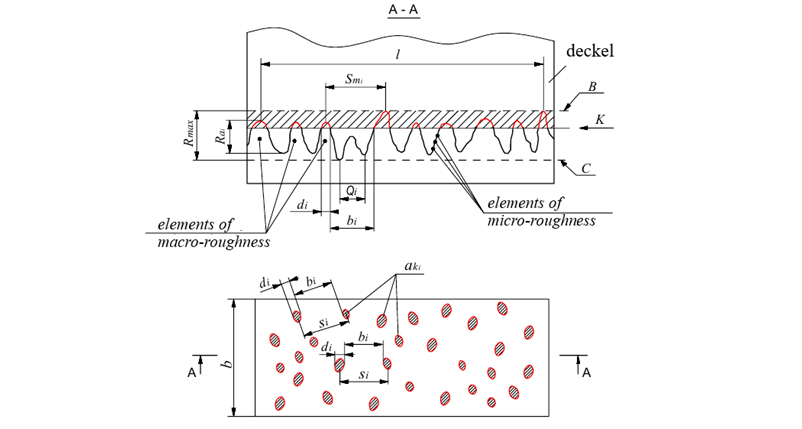Розробка схеми розподілу площадок контакту між формним та офсетним циліндрами
DOI:
https://doi.org/10.15587/2706-5448.2023.286262Ключові слова:
фактична площа контакту, шорсткість, декель, друкарська форма, зона контакту, шорсткість поверхні мікровиступівАнотація
Об’єктом дослідження є розподіл площадок контакту між формним та офсетним циліндрами. Для друкування відбитків в офсетному друкованому процесі необхідно забезпечити передачу друкарської фарби з апарату з фарбами на друкарську форму, з форми на гумовотканинний матеріал (декель) офсетного циліндра, а з декеля на друкований матеріал. При цьому якість відбитків забезпечується створенням технологічного необхідного тиску між формним, офсетним та друкарським циліндрами, яке також сприяє деформації пружного декелю та передачі шару фарби в зоні контакту. Передача ілюстративної та текстової інформацій із форми на декель офсетного циліндра відбувається за рахунок фактичної площі торкання. Тому вивчення та розрахунок фактичної площі контакту необхідне для дослідження передачі фарбового шару в контактних зонах. З цією метою було проведено огляд деяких досліджень, присвячених контактним завданням, обговорено їх переваги та недоліки. Наведено теоретичні та експериментальні співвідношення. Встановлено, що мікровиступи шорсткості поверхні друкарської форми значно впливають на деформацію декелю. Для дослідження впливу розподілу шорсткості поверхні друкарської форми на фактичну площу контакту декеля в контактній зоні, враховано взаємодію мікровиступів шорсткості поверхні друкарської форми з поверхнею декелю, що призводять до додаткових зсувів.
Запропоновано методику розрахунку кількості виступів шорсткості, для подальшого визначення фактичної площі контакту декеля та фактичного тиску в зоні контакту, з урахуванням шорсткості поверхні друкарської форми. На основі параметрів, розрахованих за запропонованою методикою при відомих значеннях шорсткості поверхні друкарської форми, надалі можна визначити фактичну площу контакту декеля та фактичний контактний тиск, оптимальні значення яких є необхідними для забезпечення необхідного перенесення фарби та якості відбитків під час друку. Отримані дані також сприяють визначенню режимів друкованого процесу під час друку всього тиражу, що призводить до підвищення тиражу стійкості друкованих форм. Підвищення тиражу стійкості друкованих форм дозволяє економити кількість друкованих форм, що споживаються. Надалі, за отриманими результатами, рекомендується скласти довідкові дані, що є необхідними при налаштуванні та експлуатації друкарської машини.
Посилання
- Tiurin, A. A. (1980). Pechatnye mashiny, avtomaty. Moscow: Kniga, 416.
- Wang, J. C., Xing, B. Q., Zhao, T. (2013). Finite Element Analysis on Real Contact Area Based on Fractal Characterization. Key Engineering Materials, 579-580, 517–522. doi: https://doi.org/10.4028/www.scientific.net/kem.579-580.517
- Suslov, M. V. (2010). Diapazon dopustimykh deformatcii tcilindrov pechatnogo apparata. Izvestiia vysshikh uchebnykh zavedenii. Problemy poligrafii i izdatelskogo dela, 4, 41–47.
- Kusaka, Y., Mizukami, M., Yamaguchi, T., Fukuda, N., Ushijima, H. (2019). Patterning defects in high-speed reverse offset printing: lessons from contact dynamics. Journal of Micromechanics and Microengineering, 29 (4). doi: https://doi.org/10.1088/1361-6439/ab024b
- Kim, K., Kim, C. H., Kim, H.-Y., Kim, D.-S. (2010). Effects of Blanket Roller Deformation on Printing Qualities in Gravure-Offset Printing Method. Japanese Journal of Applied Physics, 49 (5S1). doi: https://doi.org/10.1143/jjap.49.05ec04
- Buchner, B., Buchner, M., Buchmayr, B. (2009). Determination of the real contact area for numerical simulation. Tribology International, 42 (6), 897–901. doi: https://doi.org/10.1016/j.triboint.2008.12.009
- Song, B., Yan, S. (2017). Relationship between the real contact area and contact force in pre-sliding regime. Chinese Physics B, 26 (7), 074601. doi: https://doi.org/10.1088/1674-1056/26/7/074601
- Ao, L., Yongming, B., Qifan, C., Guangjun, L. (2019). Fractal Prediction Model for the Contact of Friction Surface and Simulation Analysis. 2019 8th International Conference on Industrial Technology and Management (ICITM), 189–195. doi: https://doi.org/10.1109/icitm.2019.8710745
- Matlin, M. M., Mozgunova, A. I., Kazankina, E. N., Kazankin, V. A. (2014). Calculation of actual area in the contact of a single microasperity modeled by a cone with a smooth surface of the part. Journal of Friction and Wear, 35 (5), 443–447. doi: https://doi.org/10.3103/s1068366614050110
- Matlin, M. M., Mozgunova, A. I., Kazankina, E. N., Kazankin, V. A. (2013). Calculating real area of contact of single microasperity modeled by a cylinder with smooth surface. Journal of Friction and Wear, 34 (5), 391–397. doi: https://doi.org/10.3103/s1068366613050085
- Aliyev, E. A., Khalilov, I. A., Ismailova, Sh. V. (2023). Determination of the actual deckle contact area and the actual pressure in the printed area. Bulletin of the South Ural State University Series «Mechanical Engineering Industry», 23 (1), 40–49. doi: https://doi.org/10.14529/engin230104
- Torskaia, E. V. (2012). Numerical simulation of frictional interaction of a rough indenter and a two-layer elastic half-space. Fizicheskaia mezomekhanika, 15 (2), 31–36.
- Demkin, N. B., Izmailov, V. V. (2010). Zavisimost ekspluatatcionnykh svoistv friktcionnogo kontakta ot mikrogeometrii kontaktiruiushchikh poverkhnostei. Trenie i iznos, 31 (1), 68–77.
- Aliyev, E. A., Khalilov, I. A., Ismailova, Sh. V. (2022). Indirect ink transfer for offset printing, taking into account the roughness of the offset printing plate surface. Machine Science. International scientific-technical journal, 11 (2), 71–79.
- Berkovich, I. I., Gromakovskii, D. G.; Gromakovskii, D. G. (Ed.) (2000). Tribologiia. Fizicheskie osnovy, mekhanika i tekhnicheskie prilozheniia. Samara, 268.
- Kochetkov, A. V., Chvanov, A. V., Arzhanukhina, S. P. (2009). Nauchnye osnovy normirovaniia sherokhovatykh poverkhnostei dorozhnykh pokrytii. Vestnik Volgogradskogo gosudarstvennogo arkhitekturno-stroitelnogo universiteta. Seriia: Stroitelstvo i arkhitektura, 14 (33), 80–86.

##submission.downloads##
Опубліковано
Як цитувати
Номер
Розділ
Ліцензія
Авторське право (c) 2023 Eldar Aliyev, Shebnem Ismailova

Ця робота ліцензується відповідно до Creative Commons Attribution 4.0 International License.
Закріплення та умови передачі авторських прав (ідентифікація авторства) здійснюється у Ліцензійному договорі. Зокрема, автори залишають за собою право на авторство свого рукопису та передають журналу право першої публікації цієї роботи на умовах ліцензії Creative Commons CC BY. При цьому вони мають право укладати самостійно додаткові угоди, що стосуються неексклюзивного поширення роботи у тому вигляді, в якому вона була опублікована цим журналом, але за умови збереження посилання на першу публікацію статті в цьому журналі.








